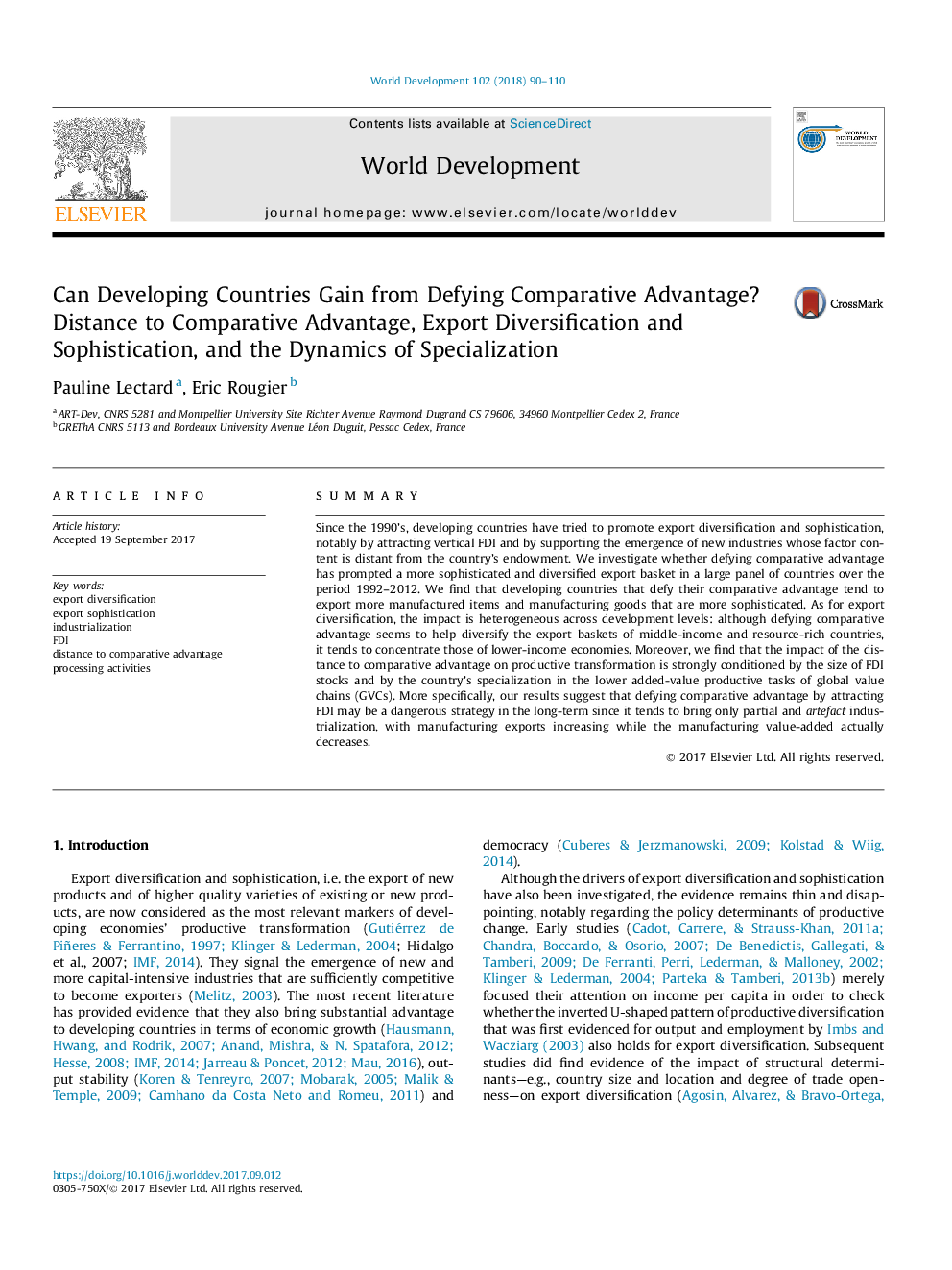| Article ID | Journal | Published Year | Pages | File Type |
|---|---|---|---|---|
| 7392286 | World Development | 2018 | 21 Pages |
Abstract
Since the 1990's, developing countries have tried to promote export diversification and sophistication, notably by attracting vertical FDI and by supporting the emergence of new industries whose factor content is distant from the country's endowment. We investigate whether defying comparative advantage has prompted a more sophisticated and diversified export basket in a large panel of countries over the period 1992-2012. We find that developing countries that defy their comparative advantage tend to export more manufactured items and manufacturing goods that are more sophisticated. As for export diversification, the impact is heterogeneous across development levels: although defying comparative advantage seems to help diversify the export baskets of middle-income and resource-rich countries, it tends to concentrate those of lower-income economies. Moreover, we find that the impact of the distance to comparative advantage on productive transformation is strongly conditioned by the size of FDI stocks and by the country's specialization in the lower added-value productive tasks of global value chains (GVCs). More specifically, our results suggest that defying comparative advantage by attracting FDI may be a dangerous strategy in the long-term since it tends to bring only partial and artefact industrialization, with manufacturing exports increasing while the manufacturing value-added actually decreases.
Related Topics
Social Sciences and Humanities
Economics, Econometrics and Finance
Economics and Econometrics
Authors
Pauline Lectard, Eric Rougier,
